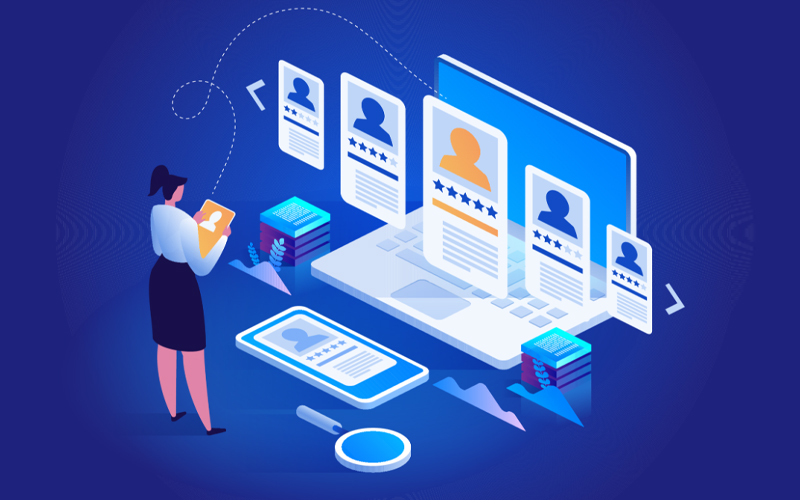You ask yourself “what do I expect when I walk into a hospital?” Clean facilities, timely assistance, accurate diagnosis, state-of-the-art infrastructure, paperless & fluid processes (right down to billing) — all these at affordable rates. Too much to expect? Not really, if you lean on technology.
It begs the question: “How many healthcare facilities have gone digital?”. Shockingly, only 7%. On the bright side, this implies that there are a lot of opportunities for digital innovation and uptake in healthcare.
Not long ago there was a sudden surge in telehealth, use of chatbot assistants, Artificial Intelligence (AI) applications, electronic health record (EHR) advice tools, and fast response test kits. Did you just think of Covid-19? You are right! Technology played a crucial part in the Covid-19 pandemic and beyond.
Without technology, we couldn’t imagine remote doctor-patient interaction or wearable medical devices. It has enabled a better understanding of intricate physiological and medical problems, and therefore, better quality patient care.
Now and later it is amazing how many advanced technological applications the healthcare industry uses routinely now. Heart valves, pacemakers and MRI scanners are a few examples of such applications.
But,the thing about technology is that, even as we are thinking “can it get any better?”, new technology has emerged.
Hence, in the future, there is a lot expected from digital health technologies. Here’s how:
- EHR for streamlining patient records
- Paperless healthcare process.
- A comprehensive picture of a patient's health history that enables medical professionals to make informed decisions about their treatment.
- Better collaboration among various medical departments.
- Documentation-less billing (EHR provides proof of care that substantiates the incurred costs).
- Easy auditing.
- Telehealth for more accessible and convenient health consultation
- Wearable technology for personalised treatment
- Big data analytics for predicting and optimising health outcomes
- Warn patients about developing certain medical conditions (such as diabetes, stroke, cardiac issues or COPD).
- Predict disease progression.
- Determine the most effective treatment options.
- Aid the marketing and sales departments of the healthcare industry.
- Boost medicine production and marketability.
- Fewer instances of drug mistakes.
- Increasing accessibility to preventive care.
- Better manpower planning.
- AI and ML for precise and accurate medicine
- Personalising therapies for cancer patients (tailored to their genetic makeup and lifestyle) with its sophisticated pattern recognition algorithm.
- Analysing numerous cancer pathology images to suggest the most suitable anti-cancer drug combinations.
- Virtual reality in myriad cases
A decade or two ago, we carried medical files on doctor visits. Today, however, clinicians log health records digitally, using EHR, which offer a variety of advantages, such as:
All these are quality and safety enhancers. Why not take advantage?
Not all situations need direct doctor-patient interaction. Imagine booking an appointment and waiting long hours for getting a fever or runny nose treated — how weary and discouraging!
Telehealth for routine and non-urgent situations is a boon. Licensed physicians diagnose patients immediately and treat them virtually. There is also the option of delivering medicines home. Fast, effective, affordable — that’s telemedicine. Importantly, it encourages people to seek medical advice.
Plus, you may be looking at a future preventive care enabler. In the future, the technology is expected to help early interventions.
Remember the maxim “Prevention is better than cure”? People today take it seriously. They want to monitor their health more often. Their approach? Use wearable devices to proactively avert major health events.
Another use-case of wearable technology is in personalised health services. These devices are as useful in collecting health-related data as any EHR. The data helps health care providers to recommend targeted solutions, based on the individual’s set of conditions and lifestyle. Afterall, one size does not fit all!
There is a tonne of health-related data available from sources like EHRs and wearable devices. Plus, technology to facilitate data analysis is available. If these technologies work together, they can:
By implementing big data analytics, the healthcare sector can experience practical advantages like:
Artificial Intelligence (AI) and Machine Learning (ML) attract significant investments, like magnets. This is advantageous for the healthcare sector because there is a sizable demand for AI-powered equipment.
Virtual health tools and chatbots are just the beginning. In the care continuum, their diagnostic abilities and role as online therapists are crucial.
However, precision medicine, medical imaging, drug development, and genomics are where AI and ML really shine.
For instance, AI has demonstrated significant potential in oncology in:
In radiology, AI technology helps to spot details that escape the human eye.
In the field of pharmacy, ML has been instrumental in significantly shortening the drug development cycle and saving up to 60% cost.
The range of medical uses for Virtual Reality (VR) technology – pain management, surgery, physical therapy, memory and cognition, mental health – is expanding.
For instance, while using VR, fMRI brain scans revealed a substantial decrease in brain activity connected to pain. Manage pain through distraction. It works!
Also, for the surgical unit. If only surgeons could have the combined vision of X-ray, MRI and ultrasound (are you thinking "Good Doctor"?). VR can help to a large extent and make it easier to establish practice opportunities and surgical plans.
Building Healthcare Blocks: Embracing Technology for Future Medical Advancements
Terms like telehealth and VR didn’t even exist a few decades ago. Wonder how they would sound to doctors and nurses of the past century!
Given the significant contribution of technology to the advancement of the healthcare system, it is obvious that there is still much more to come in this area.
Our digital age offers a vast scope for medical progress — from improving patient care, streamlining the process and reducing expenses, to developing innovative medical capabilities and treatment opportunities.
Time to make the most of technology!
* For organizations on the digital transformation journey, agility is key in responding to a rapidly changing technology and business landscape. Now more than ever, it is crucial to deliver and exceed on organizational expectations with a robust digital mindset backed by innovation. Enabling businesses to sense, learn, respond, and evolve like a living organism, will be imperative for business excellence going forward. A comprehensive, yet modular suite of services is doing exactly that. Equipping organizations with intuitive decision-making automatically at scale, actionable insights based on real-time solutions, anytime/anywhere experience, and in-depth data visibility across functions leading to hyper-productivity, Live Enterprise is building connected organizations that are innovating collaboratively for the future.







